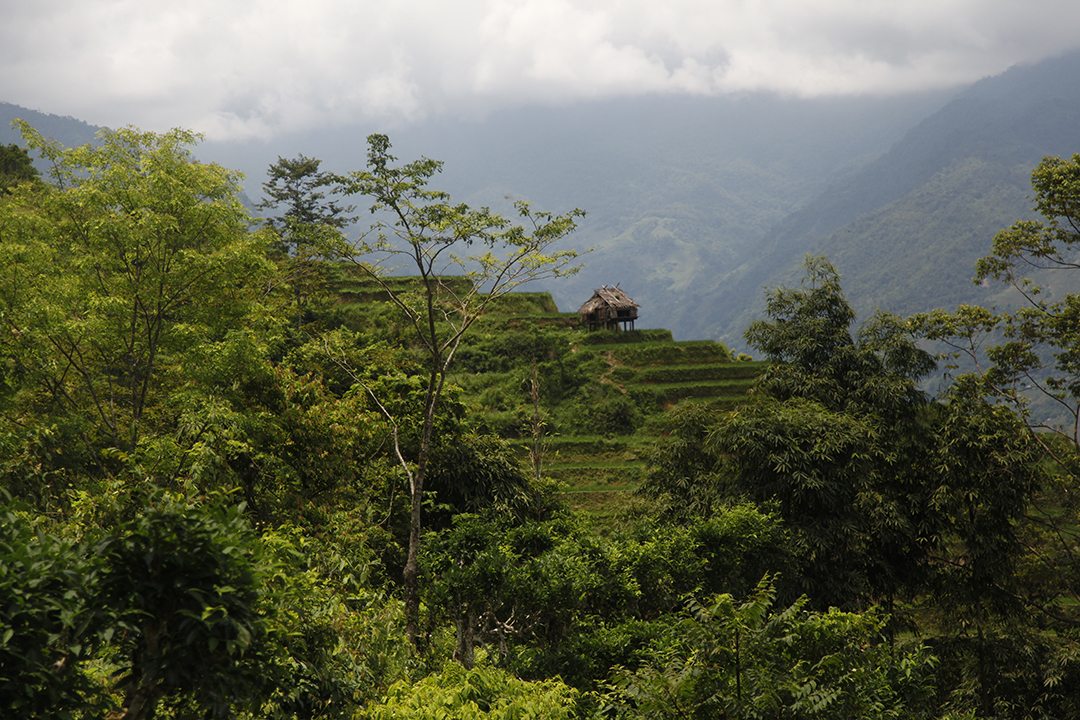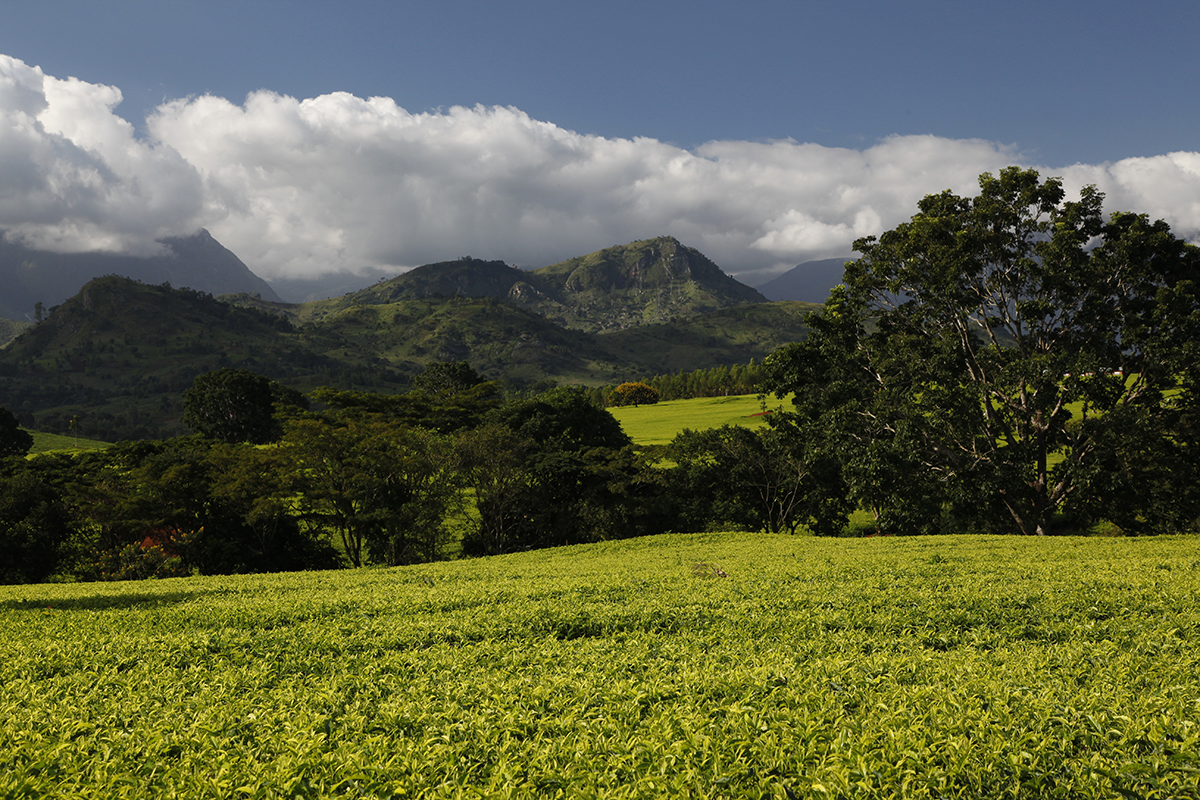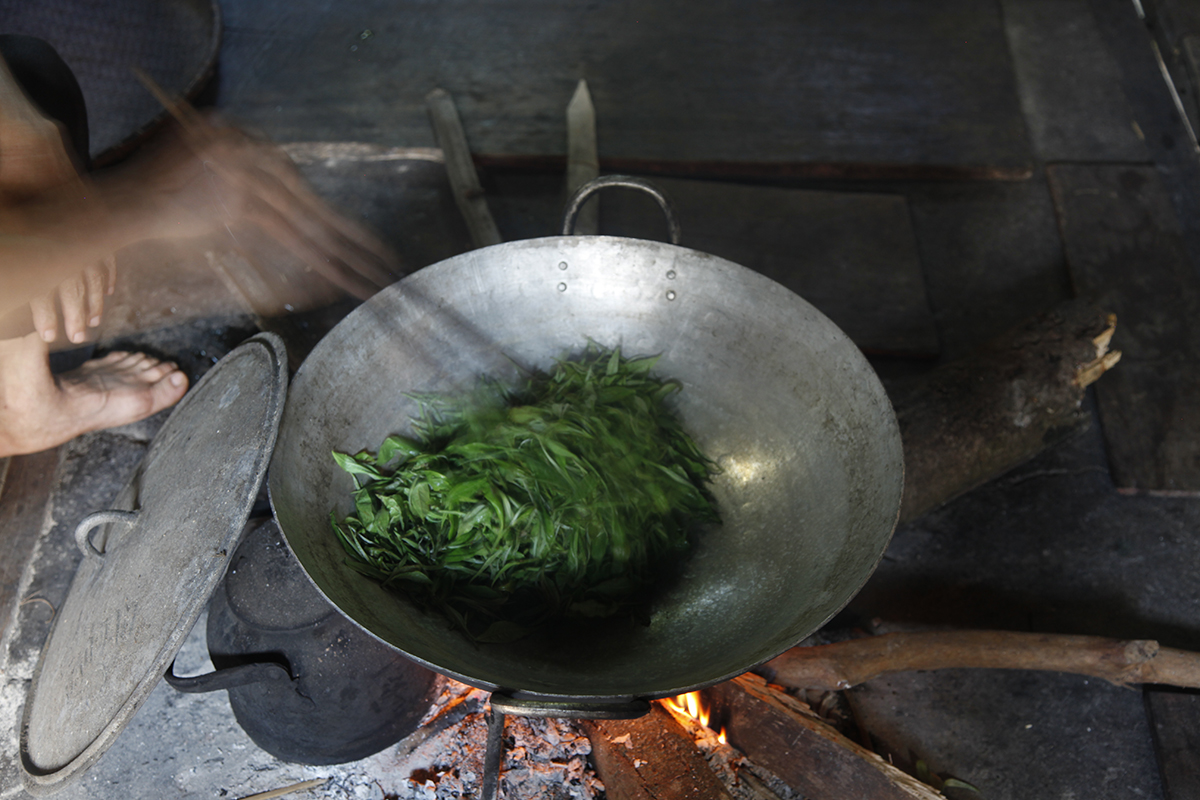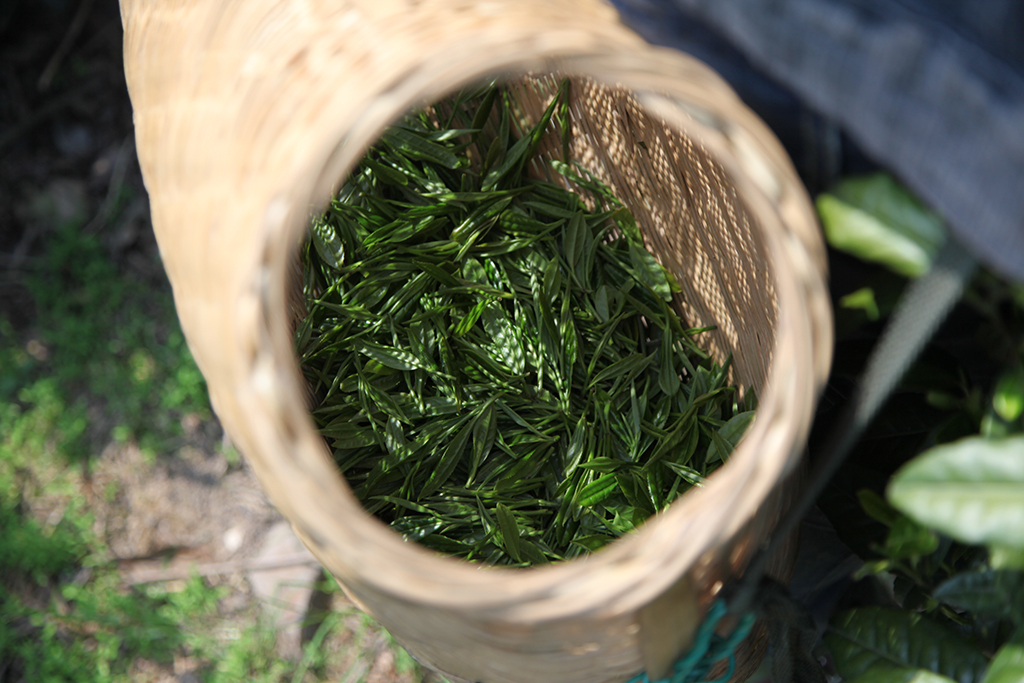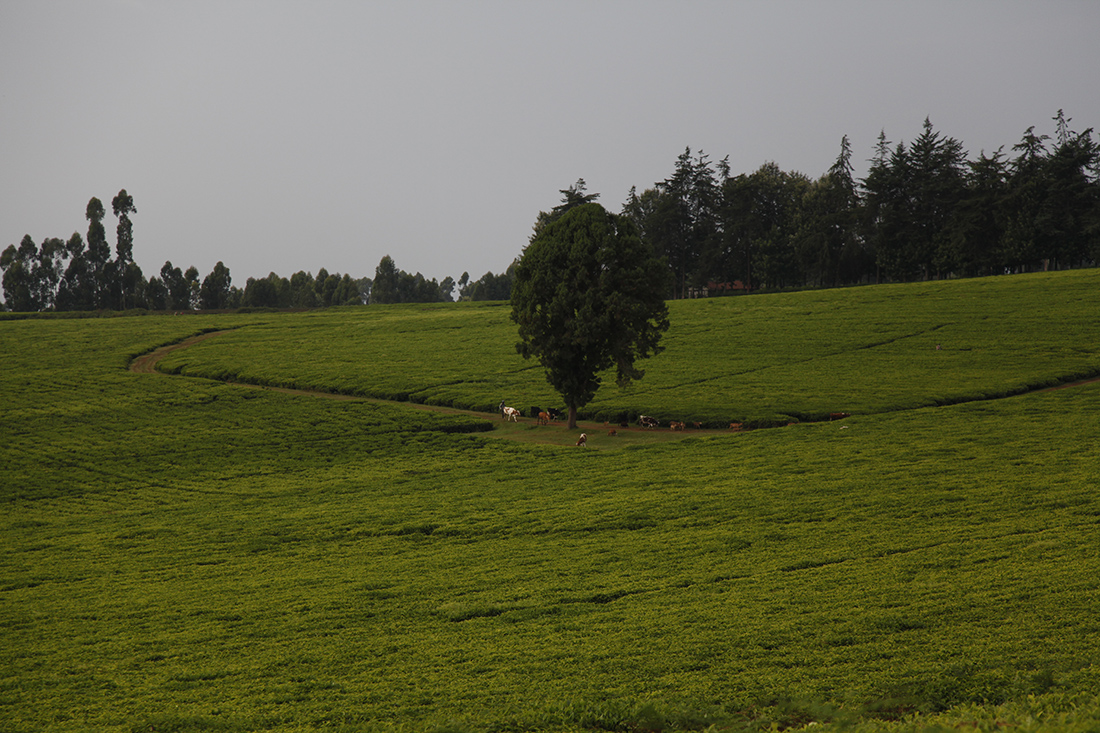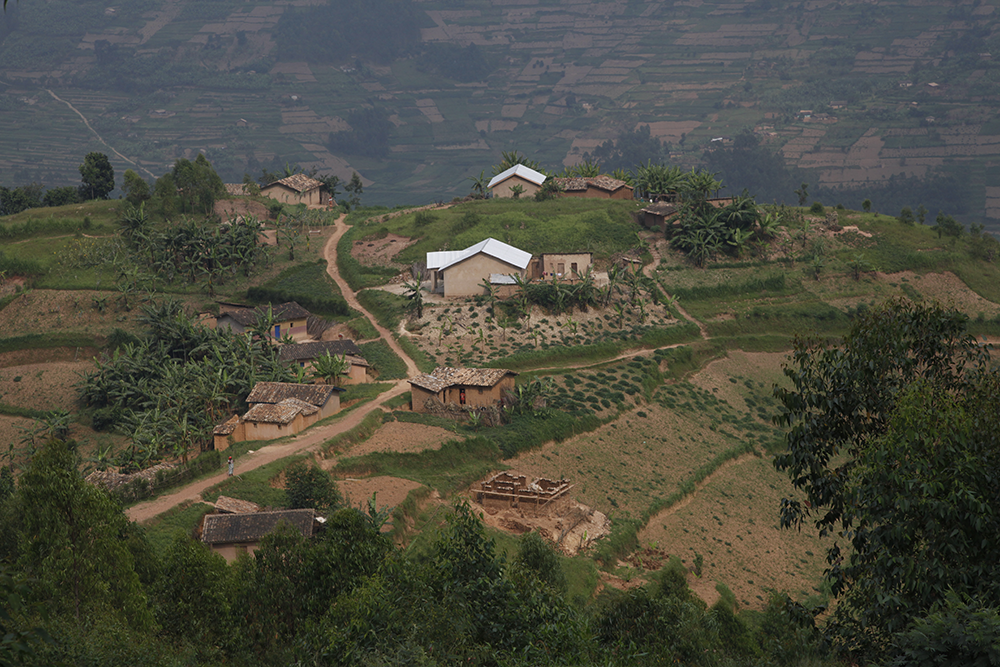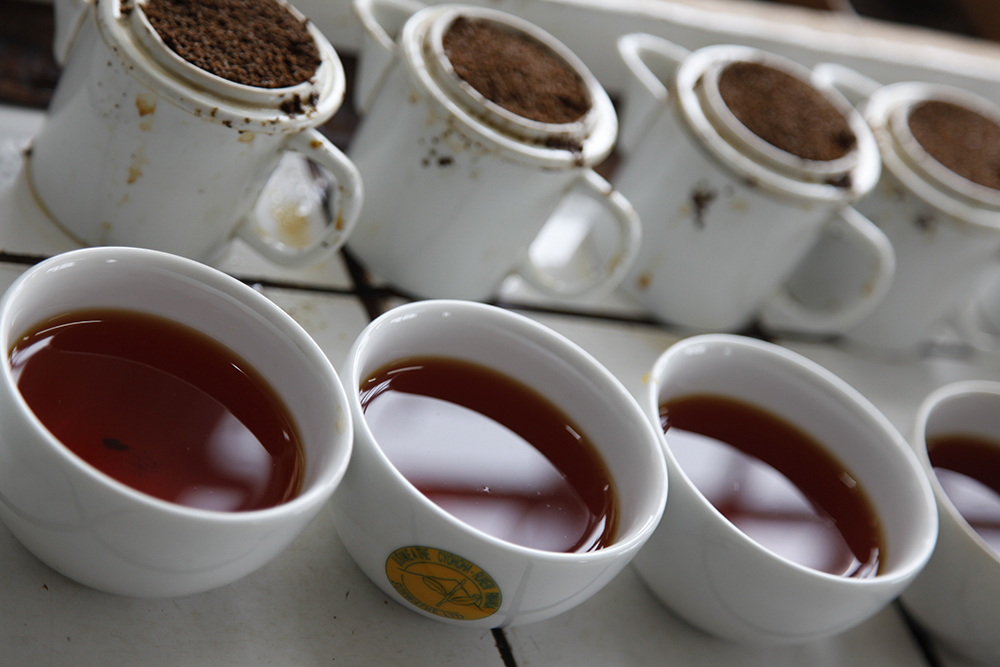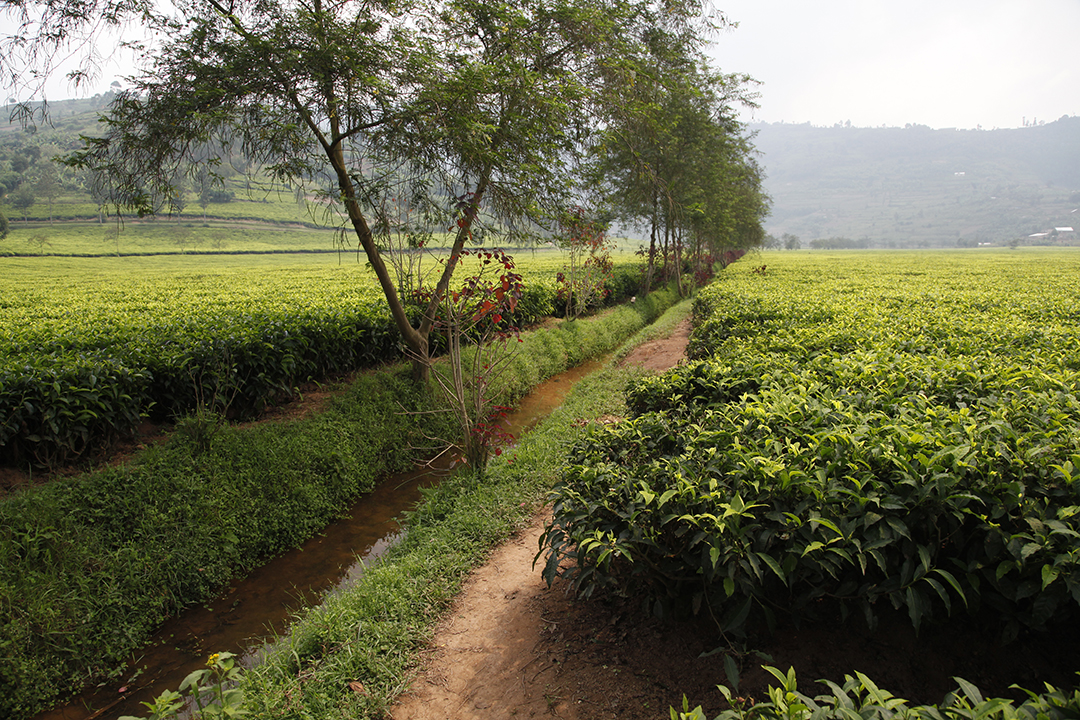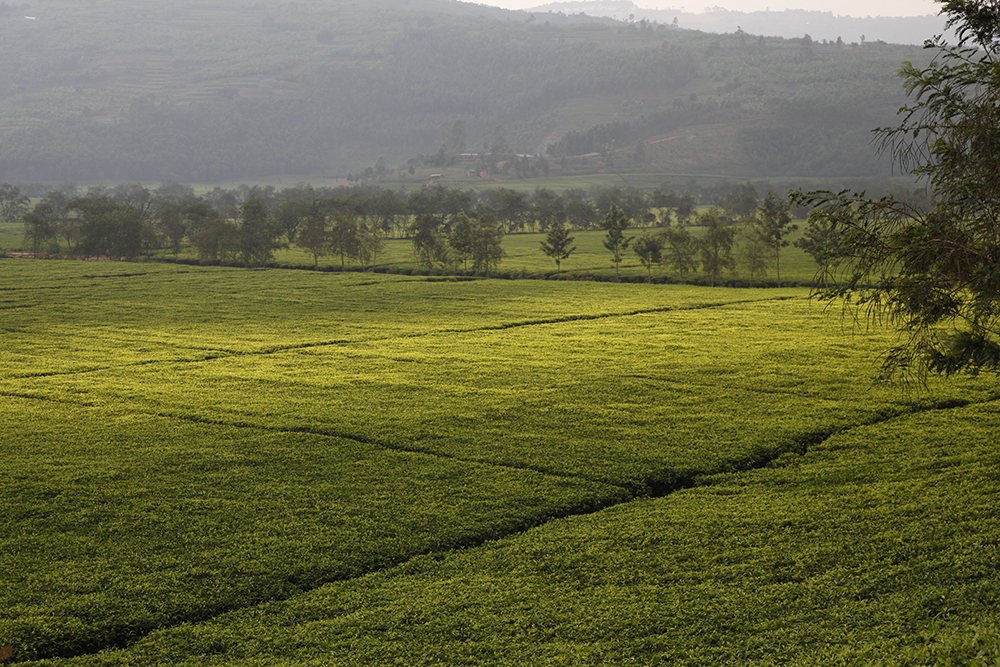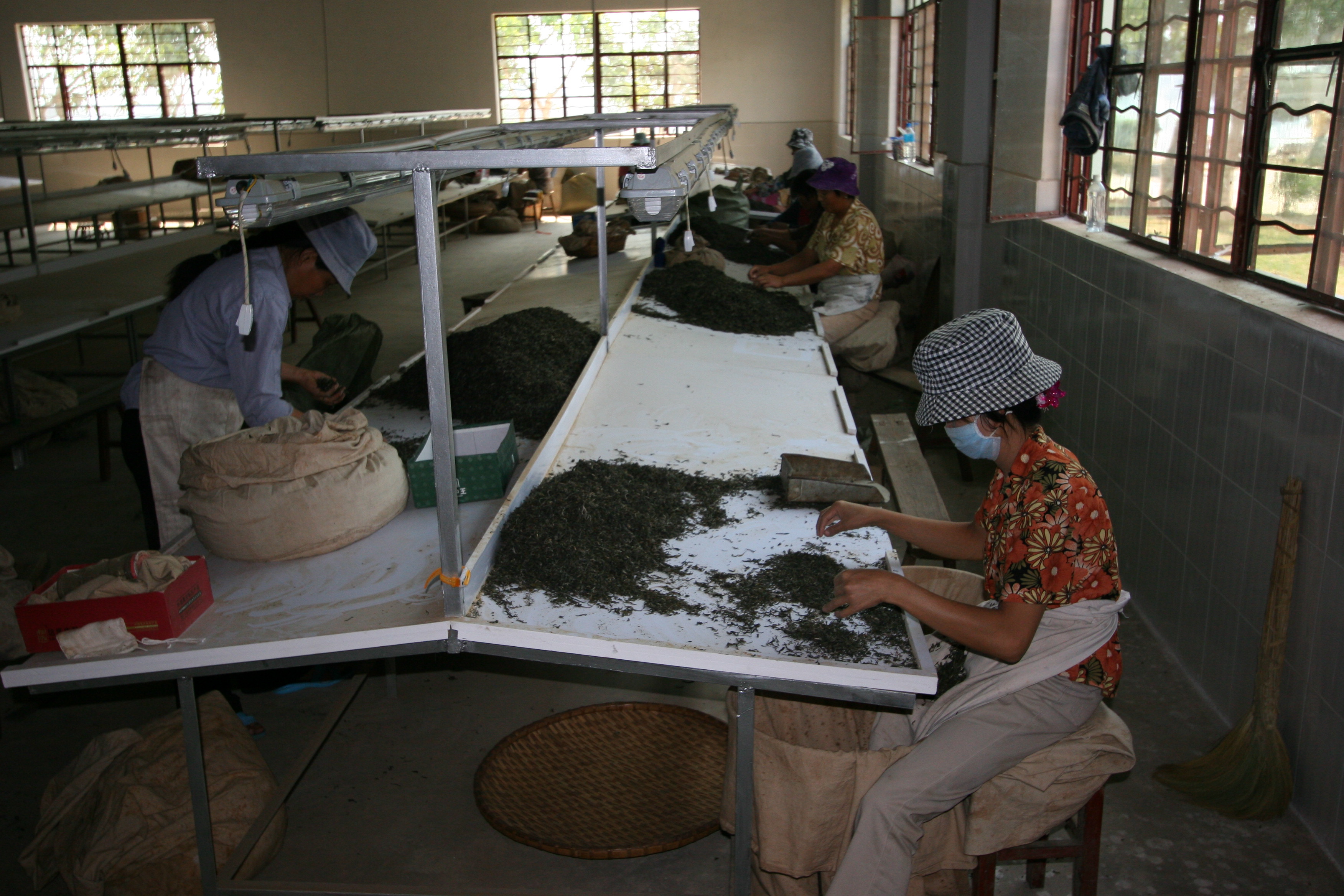I’m back from Vietnam, and would like to share some photos of my trip with you. I set out from Hanoi to the region bordering China, where there are old tea plants growing wild; the leaves will be picked to make dark tea (what’s known as Pu Erh in China). After a six-hour drive to Hà Giang, followed by an overnight stay, I laced up my walking shoes for a three-hour trek in the mountains, through paddy fields at first, until I reached the famous tea plants, in the middle of the clouds… (to be continued).
ARCHIVE FOR 2016
Wild and beautiful
I can never get over the beauty of Malawi. Every week, as I prepare for my blog article, I go back over the different photos I like but haven’t yet used here. And it’s always the pictures of Malawi that capture my attention for a long time. The scenery is truly stunning. I know my photo isn’t that good, you can see the tea plants aren’t completely in focus, but the extraordinary light, all those shades of green and yellow, the beautiful blue sky fringed with white clouds, the high plateaus, that wildness extending to the horizon, those soft lines and other, more angular ones… We live in such an incredible world! If we remember to open our eyes and look, of course. And if we aren’t set on destroying it.
A very simple tea
Many types of tea are produced using a specific method or cultivar, or on a defined terroir. While most of these teas are made on modestly sized smallholdings, they are sometimes processed on larger premises with bigger facilities, and even in factories that make tea on an industrial scale. The key difference with teas processed traditionally as opposed to industrially manufactured teas is the artisanal quality of the former; this involves skilled work done by hand, and the process is judged through the feel, appearance and smell of the leaves at every stage.
Very rigorous work
Wherever it comes from, a premium tea involves rigorous work. This starts with the harvest, which must be done meticulously, and of course continues throughout each stage in the processing. Here, in Anhui (China), they are harvesting Huang Shan Mao Feng – “Downy Tips of the Yellow Mountains”. We can see the care being taken with the plucking as well as when transporting the leaves, which are shaded from the sun but still have air circulating through them. The baskets are small to prevent any compression of the precious shoots
Altitude, a useful ally
In Kenya, some plantations lie at almost 2,000 metres. At this altitude, insects and fungi that can attack tea plants are particularly rare, due to the low temperatures. So in these conditions, it’s easier to grow teas organically. However, to be certified “organic”, as well as not using prohibited pesticides and fungicides, the soil must be enriched naturally – with compost, for example.
“What’s the news?”
There’s something no planter will ever stop me from doing, and that’s walking – setting out on foot for at least one or two hours, every day. I love it. Alone or in company, either way, I love to walk; I love meeting people, observing the changing light and weather, the beauty of blossom, the colour of cloth. I like to sit down on a doorstep and exchange smiles with people I know nothing about but with whom I share a connection, because we live on the same planet, of course, and also because tea probably plays a part in their lives too. You can learn a lot by walking: about the way people live, the methods they use to grow tea, the weather, the geography, and then all those colours and smells. Of course there are strange creatures too, sometimes snakes that are completely unknown, weird insects, things that jump. But I feel good. I sit on the edge of a rock when I want to admire something, when it’s beautiful, and simply because it’s good to take one’s time, to ask oneself what our purpose is on our small planet, to ponder the meaning of life. Tea makes you slow down. And tea also teaches you to be still, to learn to breathe, literally and figuratively; it teaches you to stop being so restless, running around from morning to night without really knowing why.
Here, three hours north of Kigali, on the little paths that wind through the mountains, there’s a lovely way to say “hello”. When you meet someone else, they greet you by raising their arms as if you’re a long-lost friend, with a joyful “Amakuru!” And this hello means “What’s the news?”
Overexposed broken leaves
Sometimes I’m asked to taste some very good teas, before being served others that don’t interest me at all – broken-leaf teas, for example. I taste them unenthusiastically and move on as quickly as possible. If the light is good and the place interesting, I like to play around with my camera while my host finishes the tasting. I experiment with the settings on my EOS5D as a way of commenting on the quality of teas in front of me. I distort the teas I don’t like – I overexpose them, as I’ve done here. I subvert reality, I frame the shots differently; I’m not interested in these overly black liquors, these broken leaves that develop a dreadful astringency and are devoid of any subtlety. I prefer to create something interesting with my toy, while my puzzled host looks on – he’d rather I got on with tasting and took fewer photos.
Irrigation and drainage on flat land
Tea plants don’t like to stand in water. When tea is grown on flat land, like here in Rwanda, it’s important to dig out ditches so that the rainwater runs away and doesn’t linger around the camellia’s roots. What’s clever here is that the drainage is designed not only to allow water to run off, but also to irrigate the crops during dry spells. For the system to operate, you need to be near a reservoir, or a river, like here, so the water can be diverted into the channels. The frogs love it, judging by the racket they make, and a whole ecosystem thrives in these damp conditions, including colourful kingfishers, which I’ve startled into flight a few times.
Rwanda: magnificent landscapes, unusual plantations
This year, I’ve been incredibly lucky to visit some beautiful tea plantations, like the ones I went to in Kenya and Rwanda. I’ve seen a lot of tea fields in my life, yet I still discover breathtaking landscapes that resemble nowhere else. For example here, in Rwanda, tea grows not on hillsides, as is often the case, but at the bottom of the valley. The valley in question may lie at an altitude of 2,000 metres, but even so, it’s flat. And it’s still hot enough here for dense vegetation to surround the tea plants. In this “Land of a Thousand Hills” you’ll find incredible scenery, but also some remarkable and little-known teas. If you want to taste the tea that grows here, and feel connected to this beautiful place, it is called “Rwanda Silver Mist“, a powerful tea with fairly fruity, spicy, honey notes. It is a delicious discovery, a door that opens onto a very beautiful corner of our planet.
Meticulous work and high standards
It takes a lot of manual work to produce a high-quality tea, except in Japan, where they have designed incredibly sophisticated machines.
Tea leaves are sorted one by one, like here, in China. This is done for any tea worthy of the name; in other words, whole-leaf, good quality tea. This leaf-by-leaf sorting eliminates tiny pieces of stem, as well as any coarser leaves. It is also an opportunity to remove the occasional insect: tea plantations are living environments, and the presence of weeds and insects can be a sign of good farming practice.

